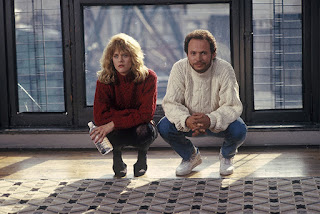This 1996 film, directed by Gregory Hoblit, is about the defense of an alleged
murderer and the trial he and his defense attorney face. The defendant, Aaron
Stampler, is played by Edward Norton (in his stunning debut). His lawyer is
Martin Vain, played by Richard Gere. Also included in this film, written by
Steve Shagan and Ann Biderman (based on the book by William Diehl), are Laura
Linney, as the prosecutor Janet Venable, and Frances McDormand, as psychiatrist
Dr. Molly Arrington. And while all of these performances, as well as the
writing, are strong, they are brought down by several filmmaking quirks and bad
choices.
Norton and Gere are the standouts in this film as they bounce off of each other very well. You can sense a relationship developing between them that assists in twisting the story in the right direction. Gere truly believes the innocence of all of his clients and goes above and beyond for them. Whenever he thinks he's being lied to or misled, he's very quick to take it personally and remind his clients what is at risk.
Norton goes deep into character as the alleged killer. He plays Aaron as a scared man who has just kind of whirl winded himself into the worst possible situation. He's been accused of murdering a priest, a man who had saved his life, and his only life-lines are Gere and McDormand.
Norton and Gere are the standouts in this film as they bounce off of each other very well. You can sense a relationship developing between them that assists in twisting the story in the right direction. Gere truly believes the innocence of all of his clients and goes above and beyond for them. Whenever he thinks he's being lied to or misled, he's very quick to take it personally and remind his clients what is at risk.
Norton goes deep into character as the alleged killer. He plays Aaron as a scared man who has just kind of whirl winded himself into the worst possible situation. He's been accused of murdering a priest, a man who had saved his life, and his only life-lines are Gere and McDormand.
The problem with the film is it is shot as a film. What I mean is there
are some unnecessary camera angles and music cues. This isn't a frequent
problem, but a critical one, as these things happen during critical
moments of the film (thankfully not the most critical moments).
As a Law & Order devotee, seeing what can basically be
considered long-form episodes,
with a lot of leash to breathe and potentially demand more from viewers, is a lot of fun
with a lot of leash to breathe and potentially demand more from viewers, is a lot of fun
Copyright 1996 Paramount Pictures
Other than that there is still the story. The time spent leading up to the
trial is very well done as you try to piece together what has happened
yourself. There are ideas of conspiracy and unethical business practices
to take into account, and it ties into the murder itself very nicely and
seamlessly. This is the prime reason the film will keep you guessing
because you will doubt yourself repeatedly, and I loved that about this
film.
And I'm very upset that I have to give the VHS back to the library-- two days late.













+poster.jpg)
















